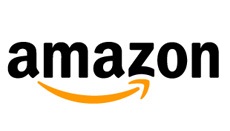Amazon.com could sell anywhere between 3 million and 5 million Google Android tablets in the fourth quarter, making it far and away the most successful slate provider on the open-source platform, according to Forrester Research.
The e-commerce giant is expected to introduce a tablet based on Google’s Android “Honeycomb” operating system in October. To compete with Apple’s iPad, which has sold more than 30 million units to date, Amazon is expected to leverage its expertise in content distribution.
Success
The company will sell applications from its Android Appstore, movies through Amazon Instant Video and MP3 downloads supported by the Amazon Cloud Player storage service for consumption on its media tablet.
Forrester analyst Sarah Rotman Epps, who has first predicted an Amazon tablet in March, said that while she believes the e-tail giant could find success with a tablet, the company would have to price it under $300 (£180) and make sure that it has enough devices to meet consumer demand.
“Even though Amazon taking on Apple is a bit like David taking on Goliath (compare the market cap, profits and cash position of the two companies), Amazon’s willingness to sell hardware at a loss combined with the strength of its brand, content, cloud infrastructure and commerce assets makes it the only credible iPad competitor in the market, Epps wrote on 29 August.
Epps’ report comes two weeks after Creative Strategies analyst Tim Bajarin said the Amazon tablet might cost $300 to make, but Amazon would discount it by $51 to entice consumers to buy it. Amazon could make up the difference in movie rentals, music downloads, Kindle book sales, other application purchases and advertising.
Amazon, using its one-click buying method as an easy-on-ramp to customers to make purchases through its Android Appstore and regular e-commerce offerings, could make back the $51 difference within six months and make a profit between 10 percent and 30 percent over the last 18 months of the device’s accounting period, Bajarin noted.
Amazon experience
One interesting caveat to this punditry: Even if the Amazon tablet is built with Google’s Android “Honeycomb” operating system, Epps said they shouldn’t market it as such. In fact, Amazon might want to take a page out of Barnes & Noble’s playbook and play down the Android software on the slate.
Apparently, product strategists from Android tablet OEMs have expressed frustration with the bugginess of the Honeycomb software and the weak user experience of the Android Market.
“Only 9 percent of consumers considering buying a tablet actively prefer an Android tablet – compared with 16 percent who prefer iOS and 46 percent who prefer Windows. Barnes & Noble has chosen to emphasise its own brand and user experience on the Nook Color rather than emphasise the Google or Android brands, even though the Nook is built on Android. Amazon may not wish to go that far on the curation spectrum, but it does need to differentiate its flavor of Android from all the rest, and that may come from emphasising the Amazon experience over the Google one.
On the other hand, the benefit of hitching itself to Android is that Amazon can over time provide its software and services on slates from Samsung, Motorola, Asus, Acer, Toshiba and others.
“In a year from now, we could see a range of ‘Amazon tablets’ made by different hardware manufacturers,” Epps wrote. That is, of course, assuming Apple won’t successfully sue to block Android tablet distribution the way it has with Samsung outside the US.





